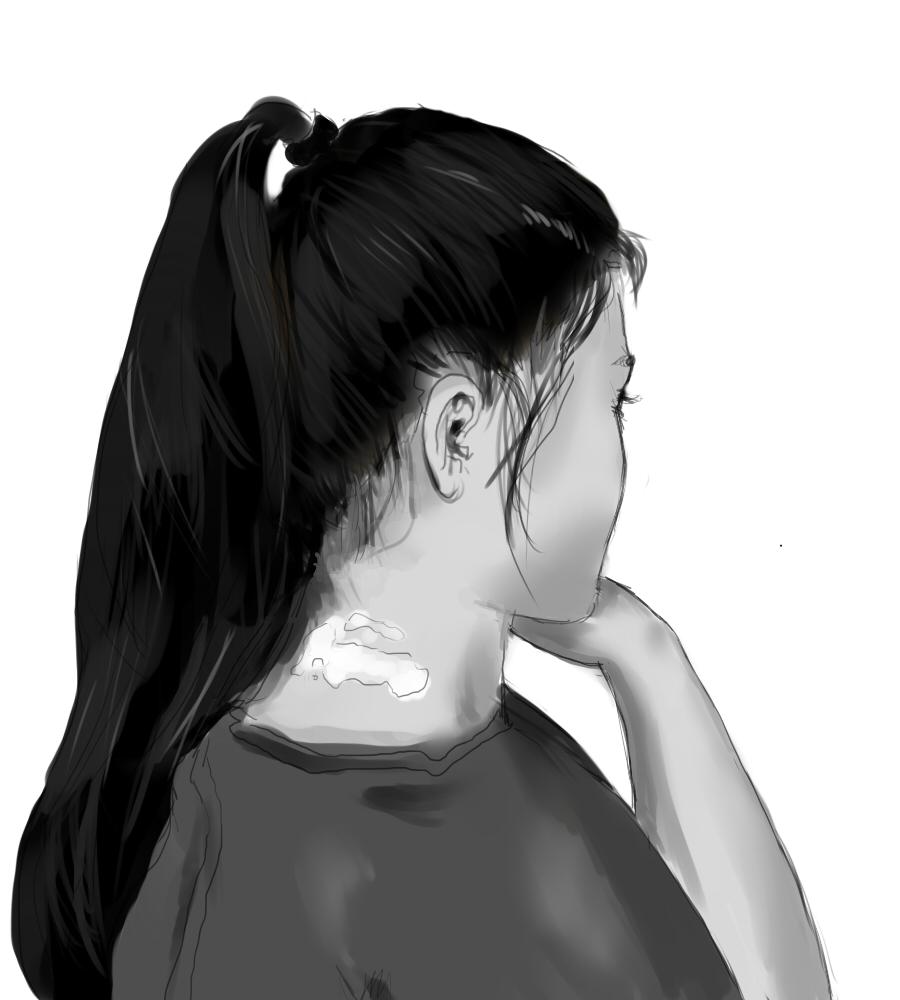There is a big white spot on my neck.
Technically, that “big white spot” is called “vitiligo,” but calling it that would mean I’d have to explain that vitiligo is a dermal condition where the skin loses its pigment whenever someone asks me what it is. Whereas if I just tell them it’s a Big White Spot, half of my condition would be explained.
The Big White Spot is really a cosmetic issue; its only harmful effect is that I am more susceptible to sunburns. Even so, the implications of the Big White Spot are far larger than its health impacts.
The main effect, of course, is my increased awareness to the pressure of societal beauty standards. I wish I could say that the Big White Spot made me defy societal beauty standards through supporting social media beauty campaigns or something similar to that. But really, it’s taught me something a little different. In order to understand fully how I learned about self love, we’d have to start at the moment the Big White Spot popped up on my neck.
The Big White Spot showed up when I was spending the summer in Taiwan, when one of my great-aunts found a spot on my neck that lacked color. The spot grew as weeks passed, and my relatives frantically took me from doctor to doctor, trying to fix my skin. Needless to say, nothing worked, and the cycle continued as I returned to Taiwan every summer.
Though their actions were out of love, my relatives didn’t really help my self confidence. Each yearly visit to Taiwan was another visit to a different hospital, to different doctors to try different medical solutions, but all lead to the same conclusion: nothing worked. And I grew to hate my skin, to hate the swath of white. It was like a non-divine version of the Mark of Cain: I was ashamed of it. It cursed me. I thought people would hate me for it.
And I grew to hate my skin, to hate the swath of white. It was like a non-divine version of the Mark of Cain: I was ashamed of it. It cursed me. I thought people would hate me for it.
About the time I turned 11, I went with my aunt to Macy’s to look at foundation and other ways to cover up my blotched skin with makeup. I was amazed and thrilled; finally, something in the world that could make my ugly Big White Spot go away, even if only temporarily.
Until freshman year, I would wear my hair down or cover up the Big White Spot with makeup, a scarf or a collar. It was a successful way of hiding the Big White Spot — many people didn’t know I had it. This all changed one day during track and field practice, when I decided to tie my hair up because it was over 80 degrees. To my surprise, no one cared. The Big White Spot was invisible. Not screaming across my skin, but silent.
I don’t know if I accepted that the Big White Spot would be there forever, or if I just gave up on trying to make it go away. Maybe I did both. What I do know is that was the true defining moment. I realized that the only person who was really judging me and making me feel bad was myself.
And it took years of going to the doctor, days of looking for collared shirts and scarves, hours of putting on makeup, to find a cure for something that wasn’t really necessary to cure in the first place. It was learning to accept my skin as my own, love it and wear it proudly that made me confident. And although every single one of us has our own vitiligos, the parts of us we abhor, accepting them as what they are — an important part of us — is what makes us, us. They are what makes each and every one of us beautifully human. v





